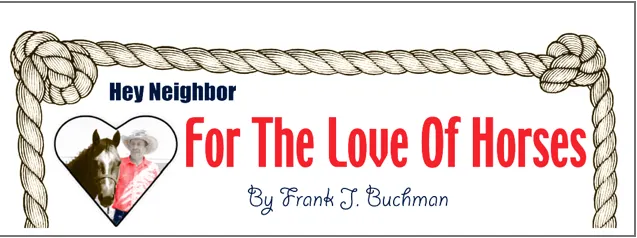From horse racing to bullfighting and circus shows, animals have historically been used in sports and for entertainment. But critical voices are getting louder.
Though humans have used animals as sources of sporting entertainment for millennia, ethical concerns and questions about welfare are becoming increasingly vocal.
“Australia has a big horse race every year, that’s becoming increasingly controversial. We can see horses fall and break their legs and die in that race almost every year,” said Heather Browning, animal welfare lecturer.
Racehorses are often housed in isolation and close confinement, which causes these social animals’ major distress.
“There’s a lot of money on the line, so obviously you have unscrupulous trainers or veterinarians who are willing to push these horses to the absolute limit,” said Joanna Grossman at the Animal Welfare Institute.
For a long time, the degree to which animals experience pain, suffering, and fear was hotly contested, which Grossman said made it all the “easier to exploit them.”
Experts say that while animals might think about and respond to pain differently to humans, they still feel pain in the same way.
“Everyone is very, very confident that mammals, dogs, horses, primates, feel pain just the way we humans do. They have brains that are structurally very, very similar to ours,” Browning said. There’s now broad consensus that birds and fish are equally sentient beings.
Some popular sporting events based on the performance of animals have already been banned in countries across the world.
Dog racing, in which greyhounds chase a mechanical lure around a track, is among them. At times, this sport drew more spectators than its more prominent rival, horse racing, and was mainstream entertainment for decades.
In 2022, the United Kingdom recorded a total of 4,354 injuries and 306 deaths of greyhound racing dogs.
However, it has recently come under scrutiny for confining the animals to lonely lives in kennels, for its brutal training methods, and for what happens to the dogs once they are no longer needed on the track.
“A lot of the training methods used to ensure the animals are performing are quite harsh and punishment based. So, what’s happening to them when they’re not on display? That’s the main concern for their welfare,” Browning said.
Dog racing remains legal in only 10 countries worldwide, four of which are in the United Kingdom (England, Scotland, Wales, and Northern Ireland.)
Animal welfare groups say keeping marine wildlife in small pools robs them of a life spent roaming the open seas.
Traditional circus acts involving animals, such as elephants, tigers, giraffes, and lions have also faced increasing backlash.
“They are outright being abused to get them to behave according to what the trainer wants them to do because that’s not naturally something that a wild, exotic animal who should be out roaming free is going to be inclined to do on their own,” Grossmann said. “So, you might have to just kind of literally beat them into submission to get them to do that.”
The use of wild animals in circuses has been banned in many countries across the world, including Bolivia, Costa Rica, India, and Iran. However, it’s still legal in many European countries.
A circus performance doesn’t show what it is like for animals to live as entertainers.
In 2021, one million citizens called for a bloc-wide ban on the use of wildlife in big-top shows after research showed that almost 90 percent of animals saved from European circuses suffered from behavioral problems, self-injury, or physical problems as a result of practices such as declawing.
France has at times held the highest number of wild animals for use in circuses.
In Germany, however, it remains legal to show wild animals at the circus. This is despite polls suggesting 75 percent of Germans are against it, alongside a rising awareness of how lions, bears, and primates are transported.
“It just doesn’t seem like there’s any possible way to house an animal in a sufficiently large and complex enclosure when you’re trying to move it around all the time,” said Browning.
Blood sports such as bullfighting, in which a bull and a matador face off in a public spectacle, have also become ever more controversial.
Mexico had banned bullfighting in 2022, but overturned the decision in 2023, after bullfight organizers claimed it violated their right to continue the 500-year-old tradition.
Approximately 250,000 bulls are killed in organized fights annually, according to a European animal welfare organization.
Grossman described it as a “very violent and very cruel sport” rooted in brutality. “If the goal is just to terrorize a poor animal and then ultimately end up killing them, to me, that stands out as a very blatant example of needless and unjustified suffering.
“But the good news is that we have seen a move in various jurisdictions and countries to ban forms of blood sports,” she added.
Bullfighting has already been outlawed in many countries where it used to be popular, including Argentina, Canada, Cuba, Italy, and the United Kingdom. Nowadays, it is only legal in eight countries worldwide, three of which are in Europe: Spain, France, and Portugal.
Mexico’s decision to overturn its ban on bullfighting in December 2023 caused massive protests.
And though Grossman said there will likely always be people who think blood sports should remain legal, she has also seen “much more concern among the public for animal welfare.”
“How the animals are housed and cared for plays a huge part. The majority of their life is spent not doing the sport. And many are simply killed when they’re no longer useful. That’s why regulations around that are vital,” Browning said.
But it’s not enough to just create these laws. “We need to make sure that there are enough inspectors who arere doing their jobs on a regular basis,” she added.
Animal welfare experts say awareness can create pressure and drive change.
Social media has also helped in showing people what’s happening behind closed doors, said Grossmann.
“It has made the public see footage of what is really going on,” she said.
Browning agreed, adding that seeing abuse could lead people to refuse to pay for something where animal cruelty is happening.
+++30+++
CUTLINE
Racehorses are often housed in isolation and close confinement, which causes these social animals’ major distress.





